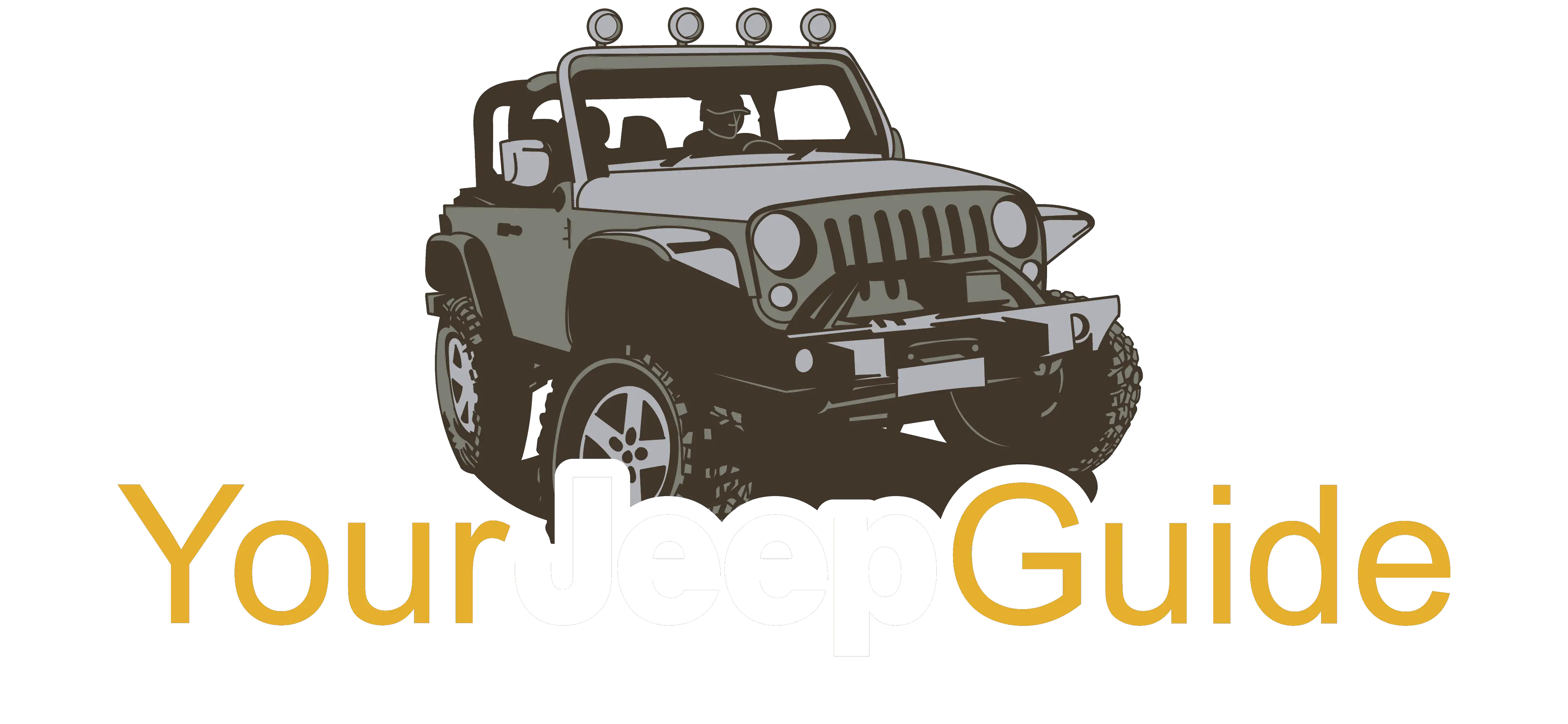Is size really everything?
Short of rolling into innuendo and double entendres here, let’s just keep our minds on the trail and focus on what really matters when the going gets rough. Tire Size. Tires have become a sort of a badge of honor for Jeep owners but is bigger really always better?
We’re going to cover this question in detail and give you everything you need to know about Jeep Wrangler tire sizes.

Jeep Wrangler Tire Sizes & Lift Needed
Depending on your needs and your budget, 4 tire sizes offer a solid selection of tires from a wide selection of established and well-loved brands. To accommodate the larger tires, Jeep owners will also need to lift their vehicles appropriately with either a “budget boost” for smaller tire sizes or a comprehensive lift kit.
In general, the larger the tire, the larger the lift needs to be to accommodate the tire.
| Tire Size | Lift Size Needed to Fit (JL & JK) |
|---|---|
| 33 Inch | 1.5” |
| 35 Inch | 2.5” |
| 37 Inch | 4” |
| 40 Inch | 6” |
33 Inch Tire
A 33-inch tire offers Jeep owners ample off-road capability without taking a big hit on driveability or fuel economy. For those that use their vehicle equally on the road and off the road, a 33” tire is a great option.
In fact, the hardcore Rubicon trim is designed with a 33-inch tire right out of the factory, so you can be assured that this tire size will maintain stock driving dynamics while seriously upping your off-road game. This size tire can also be easily fitted with only a “budget boost” lift that is substantially cheaper than a comprehensive lift.

Advantages
- Maintains factory driving dynamics and fuel economy
- Good off-road ability while maintaining on-road dynamics
- Minimal lift required
Disadvantages
- Gives up ultimate off-road capability for on-road performance
- Doesn’t look as good as larger tires
Best For
The off-road enthusiast who wants a vehicle that does extremely well off the beaten path on weekends but still maintains stock driving dynamics, and fuel economy the rest of the week while driving around town.
35 Inch Tire
For those looking for that extra edge off-road and are willing to trade off some driveability and fuel economy; a 35-inch tire is a very popular tire choice for Jeep owners. This upgrade will require a taller lift kit to properly accommodate this meatier tire but owners that run this setup remark that the driveability and overall handling of their Jeep remain relatively secure but acceleration and fuel economy can start to take a hit.
Advantages
- Additional ground clearance and off-road capability
- A good compromise between off-road ability and on-road handling

Disadvantages
- Fuel economy and acceleration negatively affected without a re-gear
- Loss of on-road handling capability and ride quality
- Higher cost due to the more extensive lift kit required
Best For
An off-roading enthusiast who is okay with heavily modifying their Jeep and trading off some driveability/fuel economy in daily driving for increased off-road capability and killer good looks.
37 Inch Tire
Once you step up to a 37-inch tire, things start to drastically change. Not only do you get ever more off-road capability but the practical driveability of your vehicle can drastically change. This is especially true if you own a JK Wrangler, as the newer JL Wranglers offer a suspension design and transmission design that is more forgiving for larger tire designs.
Owners remark that lifts in this range make their Jeeps more of a handful off-road and require more extensive modifications to properly function and maintain safety.
Advantages
- Huge increase in off-road capability
- Killer looks that properly fill out the wheel wells
- Less change to driveability on JL models
- Can run on stock rims
Disadvantages
- JK wranglers can suffer from driveability and shimmy issues at speed
- Regear necessary or loss of 6-7 MPG is common
- Requires extensive modifications to the suspension and drivetrain

Best For
Hardcore off-road enthusiasts who want to live on the absolute limit of what’s acceptable in a daily driver, are comfortable heavily modifying their Jeeps and don’t mind major tradeoffs in day to day driving.
40 Inch Tire
Quite frankly, a 40-inch tire represents the absolute ultimate in off-road capability but this capability has many consequences that must be considered before fully committing.
Beyond the tires alone, owners who want to “go big” will need to upgrade everything from the axles to the gear ratios and also employ a huge lift kit to boot. Make no mistake, upgrading your Jeep to these levels will make you the absolute king of the trail.
Advantages
- Properly equipped, nearly unstoppable off-road
- Most brands/types of tires in this size range are extremely durable
- Looks to make Jeep fans weak in the knees
Disadvantages
- Huge amount of modifications required to run tires this large
- Tires in this size range are extremely expensive
- Real-world hits to both fuel economy and day to day driveability
Best For
The most hardcore of Jeep owners who’s is willing to spend some serious money to build the ultimate trail rig that is a no-compromises, off-roading monster.

Jeep Wrangler Wheel Sizes
Beyond the tire size, there are lots to be discussed when it comes time for wheel sizes as well. The larger the wheel, the smaller the sidewall of the tire must be to properly fit on your Jeep. Beauty is in the eye of the beholder but in general, larger wheels are more desirable but they are not necessarily better off-road.
15 Inch
This size came stock on the YJ and TJ wranglers of yore and are commonly purchased by these Jeep owners who are on a budget. While these can be fitted to JK and JL Wranglers, most experts caution against this due to the lack of tires that fit the 15” wheel and the difficulty of clearing the brakes, especially on JL models. Many owners have a deep love for the “steelie” style and appreciate its low price and durability.
16 Inch
Wheels in the 16” size also came stock on the YJ and TJ but they never really took off in the aftermarket due to the popularity of the 15”. You can find a decent selection of 16” wheels/tires but not nearly as many in the 15” or 17” range.

17 Inch
You can find 17-inch wheels as standard equipment on both JK and JL Wranglers and special attention should be drawn to the fact that Rubicon models utilize a 17 wheel.
Owners seek out 17-inch wheels for their wide availability of tires for all years of Jeeps. Especially popular are 17” wheels with a 35-inch tire, although most owners agree that you can get away with a 33-inch tire as well but it won’t look quite as good.
18 Inch
You can find an 18-inch rim on the Sahara of the Wrangler. There’s no practical reason to go with an 18-inch rim but many Jeep owners love the way these rims look over their smaller counterparts. A larger rim means less sidewall available for the tire and this can result in a rougher ride. Ultimately, it’s up to you whether the additional style is worth it.
Factors to Consider When Choosing Tires for a Jeep Wrangler
Overwhelmed yet? Don’t be! Although it can seem overwhelming, deciding what wheel/tire combo is right for you comes down to a small number of key factors that you’ll need to consider before dropping some coin on some new tires.
How Serious of an Off-Roader Are You?
Before making any decision on wheels and tires, you’ll need to heavily consider what you’re going to use your Jeep for.
Is this a trail rig that’s only used on the weekend?
Do you regularly drive at highway speeds or utilize your Jeep for running errands around town but also want to hit the trail on the weekend?
All of these factors can drastically change the direction of your build. Maybe you just want to look like you’re ready to go off-road but won’t ever actually do it (we’re not judging). Keep your needs first!

What’s Your Budget?
Now that you’ve settled on how your Jeep will be used, how much do you have to spend?
You’ll quickly realize that building the perfect Jeep can be an expensive hobby but compromises can be made to keep your build under budget while still creating a trail-worthy rig that will be fun for years to come.
How Long Do You Plan to Keep Your Vehicle?
One thing that’s not up for debate is the fact that modifications are rarely as valuable to others as they will be to you. Just because you build the perfect Jeep for your needs, doesn’t mean that that the next person will find as much value in your build should you choose to sell it down the line.
Remember, used components only bring a fraction of the cost of new. If you plan to keep your Jeep till the wheels fall off, this may not be a concern but if you consistently buy new vehicles, be aware of this hidden cost.
Conclusion
The most important thing you can do when deciding on a set of wheels and tires is to keep in mind what you want to accomplish with your personal rig. It’s natural to get a sense of envy when you hit the trail or browse the forums and see incredible builds that are lifted up to the heavens.

Don’t give in to this thinking. All you may really need is a set of 33 or 35-inch tires for your Jeep when all you want is a set of 40-inch tires. Using the information provided above, we’re confident you can come up with the best decision for your own needs.
Have fun out there!
People Also Ask
Yes, but on most stock suspensions a 33-inch tire will rub when off-roading. Rubicon’s, however, come standard with a 33-inch tire and have a modified suspension to accommodate.
It’s only about an inch taller overall, or, about an inch more of clearance at the axle.
At minimum a 2.5” and a maximum of 3.5”
33 Inches, as found on the Rubicon trim.
If you’re looking for maximum capability off-road, yes, bigger is better!
There isn’t one number that tells you the overall diameter of your tire, but you can check various charts to get an idea of equivalent sizes.
In general, the more sidewall, the higher the load rating is. So, yes, a larger tire may have an increased load rating. Keep in mind, this is not a hard and fast rule.
As soon as you want to get out on the trail! There’s no reason to wait unless budget is a concern.
Who Worked on This?

Brian
Editor
A master of organization, Brian helps keep everything running smoothly for Your Jeep Guide.
No Jeep yet but we’re working on that!

Cory
Writer
Cory loves his XJ and frequently thrashes it through the hills. He’s constantly fixing something.
“What fenders?”
Check Us Out!
